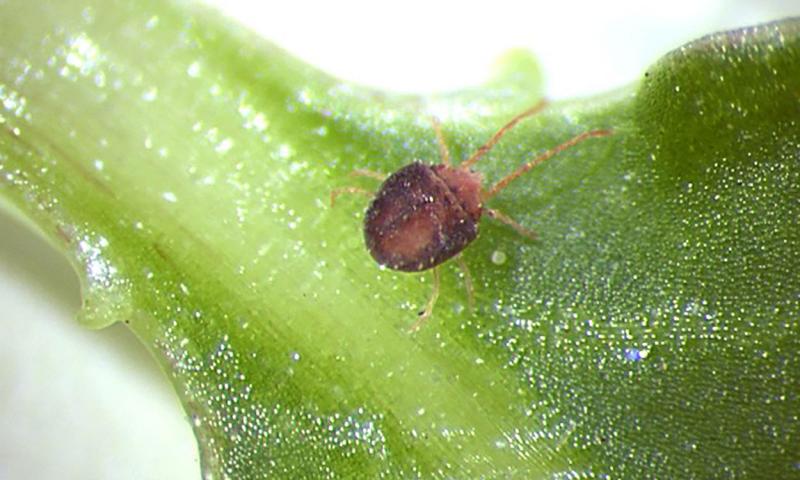
The periods of unseasonably warm weather, especially in Western South Dakota, have temporarily brought several insects and other arthropods out of their winter hiding places. One of the arthropods getting attention lately has been the clover mite (Figure 1). Multiple people in the Rapid City area have reported seeing large numbers of these small, reddish-brown mites crawling on the exterior and interior walls of houses and other buildings. Clover mites are sun-lovers so it’s not surprising that most sightings have been around windows or on walls that face south or southwest. The sudden mass appearance of clover mites has caused alarm for some people; however, the mites don’t cause any structural damage and are harmless to humans.
Profile
Clover mites are very small in size, measuring only 0.03 inch long. They are red-brown in color and adults have eight legs with their front pair much longer than the rest. Clover mites feed on plants, preferably grasses and clovers. They are most common in thick, well-fertilized lawns as such environments are highly beneficial for their populations. Dry conditions are also favored by clover mites, so the current drought could certainly play a role in their abundance.
Management
As mentioned previously, clover mites are harmless to people. They are also short-lived and do not reproduce indoors. However, they are considered a nuisance pest when they attempt to invade buildings in search of overwintering sites.
The simplest form of managing clover mites involves physical removal, such as using a vacuum cleaner to suck them up. It is important to avoid crushing the mites because this may produce red stains, especially on fabrics. Preventative options include spreading powders like diatomaceous earth, baby powder, or baking soda around doors and window frames to prevent entry. Similarly, it is important that doors and windows are sealed properly by caulking over any cracks or crevices.
Perimeter sprays may also be used around the external foundation of buildings and indoors if the product label allows. It’s recommended to use a miticide or other product that is specifically labeled for controlling mites. Always be sure to read and follow label directions to ensure safe and appropriate application of any pesticide product. Keep in mind that once temperatures turn consistently cold again and the arthropods become inactive, perimeter sprays will be less effective.


